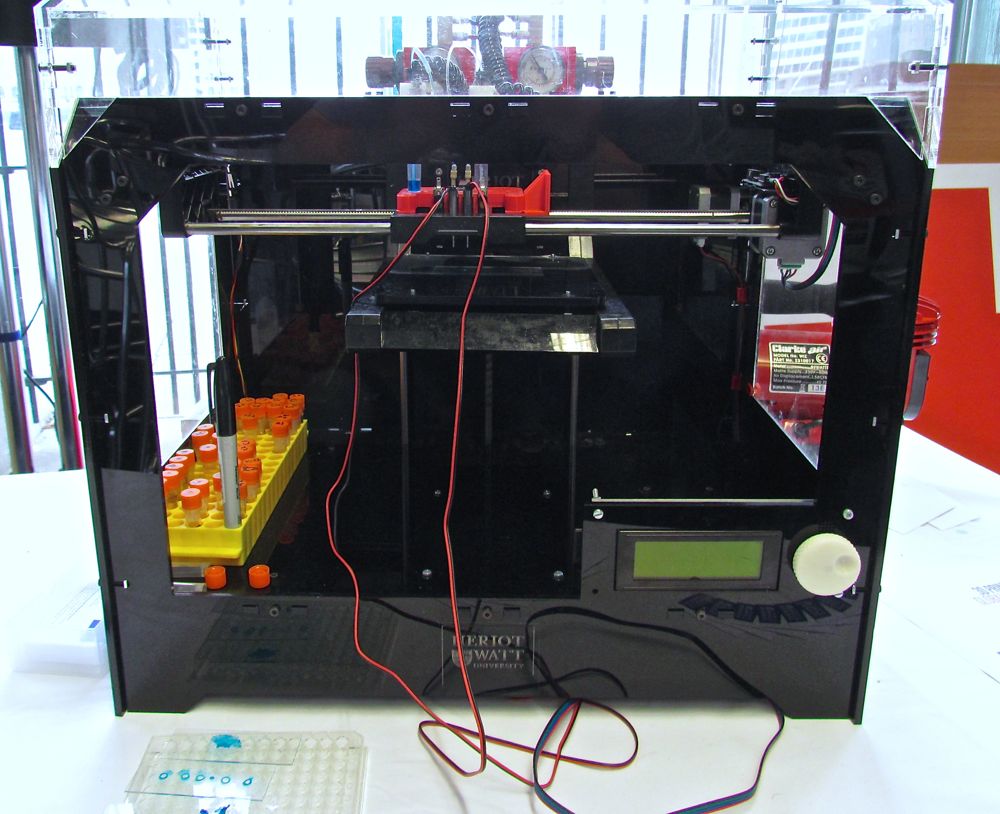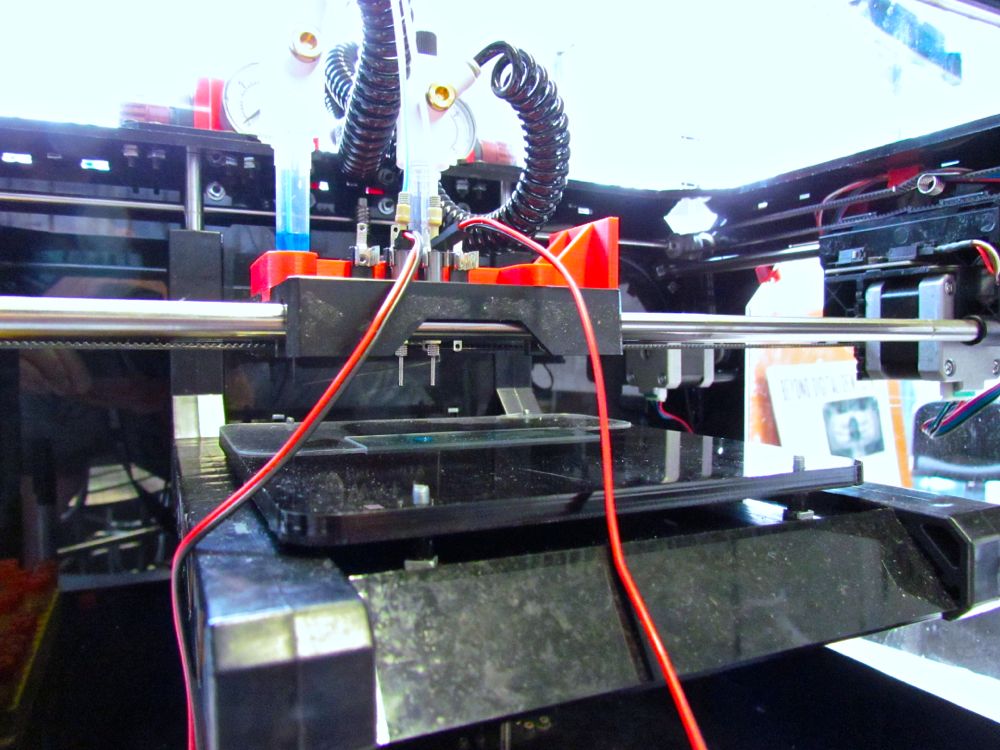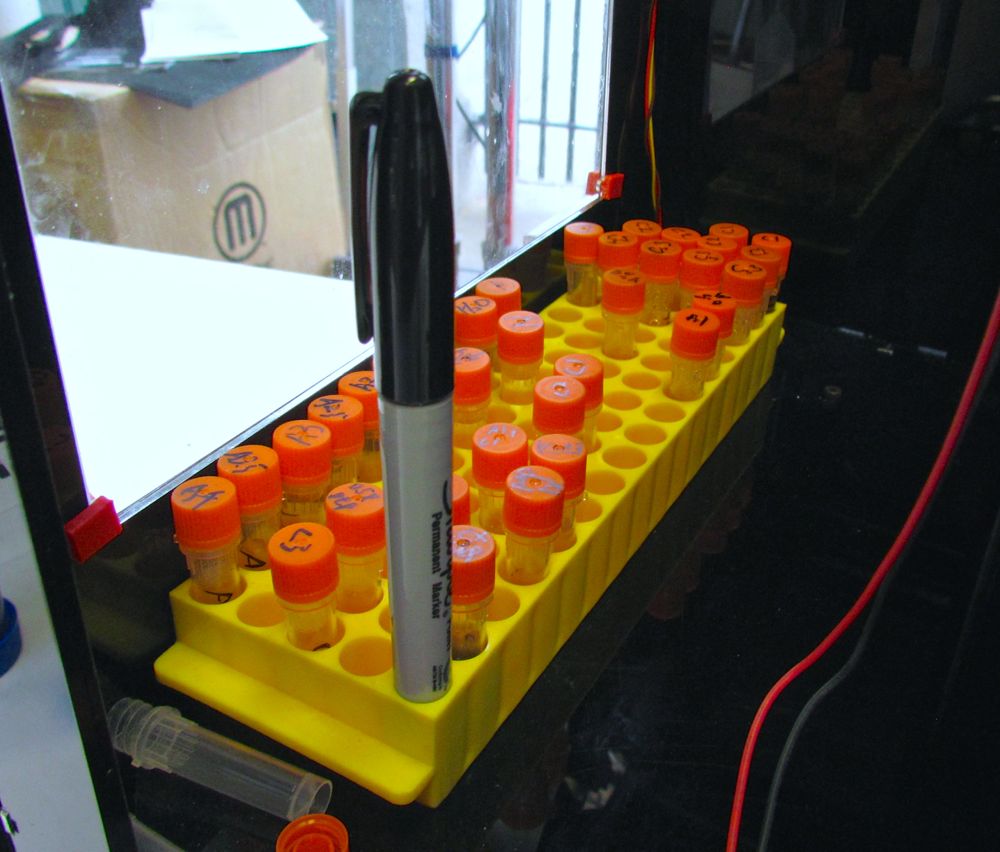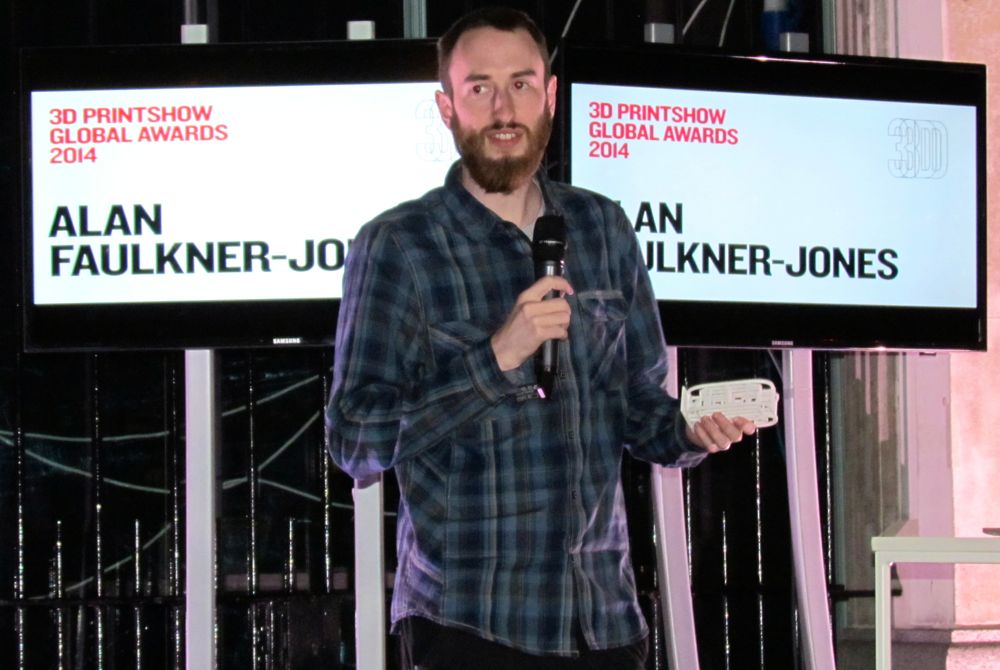
Alan Faulkner-Jones is a PhD student at Heriot Watt University in Edinburgh, and he’s created a revolutionary 3D bioprinter.
Faulkner-Jones’ design involves a four-extruder, valve-based 3D bioprinter that inserts living cells within a gel. The cells grow, while the gel eventually dissolves, leaving a structured section of living tissue.
This approach has been the way of bioprinting for some years now, but the difficulty is in maintaining the living tissue, which must be fed nutrients, oxygen, etc. Up to now this has severely limited the thickness of bioprints, since nutrients can penetrate only a short distance in bioprinting gels.

Faulkner-Jones’ design changes this. His gel is “perfusible” and permits the passage of nutrients not just millimeters of distance, but “centimeters”! This is a major breakthrough that should permit, eventually, the printing of large 3D biostructures, perhaps even organs if vascular cells can be printed.

For now, Faulkner-Jones says they’ve been making liver cells for drug testing, which itself takes significant time and pressure off the medical technicians, since the output is more reliable and reproducible.
What’s next? Faulkner-Jones says it’s the Pancreas, specifically the islet unit for making insulin.
If successful, this might be a critically important development for diabetics.
So far this bioprinter is merely a research project, but we understand it could morph into a commercial product given the capabilities it could deliver.

It’s no wonder Faulkner-Jones won the 3D Printshow Global Award for most Inspirational Individual.

